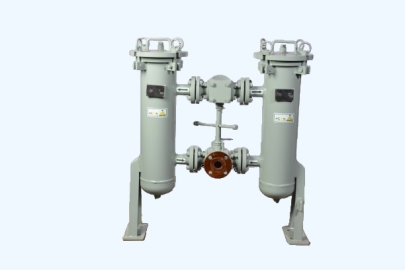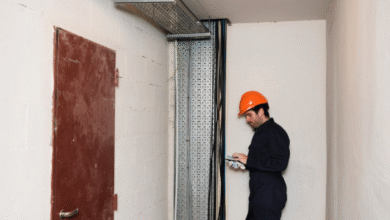Guide to Strainers: Industrial Solutions by ACME Fluid Systems

In the world of fluid filtration and pipeline protection, strainers play a vital role in ensuring smooth operations, minimizing wear, and safeguarding sensitive equipment. ACME Fluid Systems—a prominent ISO-certified manufacturer based in India—offers a comprehensive suite of high-performance strainers tailored for industrial applications.
Below, we unpack the most significant types of strainers, their working mechanisms, industrial relevance, and best-use scenarios, providing a clear, expert-level overview for professionals and technical buyers alike.
In industrial systems, preserving fluid and gas purity is crucial for ensuring equipment longevity and peak performance. Strainers play a vital role in capturing unwanted particles and debris, reducing maintenance needs, and safeguarding downstream components.
Overview of Industrial Strainers
These devices are integrated into pipelines to eliminate suspended solids from fluids—liquids or gases—helping prevent contamination and lower upkeep costs.
Y Type Strainers
Overview: These compact strainers channel fluid through a perforated or mesh-lined element that traps debris, thus protecting downstream equipment like pumps and valves.
Advantages:
- Efficiency in smaller or restricted piping setups.
- Cost-effective compared to larger units.
- Easy to integrate in tight configurations.
Ideal For: Moderately contaminated flows in chemical, HVAC, or water management systems.
Where They’re Used
-
Steam systems (to protect valves and traps)
-
Liquid filtration (water, oil, chemical processing)
-
Gas lines (removing particulate matter)
Why Choose Them?
-
Compact and versatile
-
Handles high pressures effectively
-
Comes with a blow-off valve for easy cleaning without disassembly
T Type Strainers
Overview: Also configured inline, these strainers have a “T” shape optimized for higher-flow systems requiring durable and high-capacity filtration.
Advantages:
- Constructed for large pipelines and heavier flows.
- Customizable mesh sizes to match process needs.
- Built to withstand demanding industrial environments.
Ideal For: Oil & gas, power generation, high-volume chemical processing.
Ideal Applications
-
Chemical processing (protecting pumps or heat exchangers)
-
Oil & gas pipelines (removing contaminants to avoid damage)
-
Power generation (ensuring clean feed water for boilers and turbines)
Advantages
-
Built to specific needs with customizable designs
-
Durable construction suited for high-pressure conditions
-
Suitable for both temporary and permanent setups
Basket Strainers
Overview: Featuring a removable basket, these strainers are known for ease of cleaning and high debris capacity. They come either as simplex (single basket inline) or duplex (dual basket with flow switch for continuous operation).
Advantages:
- Simplex units are efficient and straightforward.
- Duplex systems ensure zero downtime during maintenance.
- Greater surface area and capacity, ideal for heavy debris applications.
Ideal For: Food and beverage, pharmaceuticals, refineries, and any continuous-critical fluid processes.
Ideal Applications
-
Water treatment (including cooling and process systems)
-
Petrochemical operations (protecting sensitive equipment)
-
Food & beverage production (ensuring safety and cleanliness)
Advantages
-
Large dirt-holding capacity
-
Generally lower pressure drop
-
Simple removal and cleaning of the internal element
Duplex Basket Strainers
Overview: Built for true uninterrupted operation, duplex basket strainers incorporate two housings with a valve mechanism that diverts flow as one basket is serviced.
Advantages:
- Maintenance without stoppage.
- Enhanced system reliability.
- Particularly critical in mission-critical systems like firefighting, pharma, or power plants.
Ideal Applications
-
Continuous operations like paper mills and chemical plants (where shutdowns are costly)
-
Marine systems (e.g., seawater cooling without halts)
-
Pharmaceutical industries (maintaining sterile, uninterrupted filtration)
Advantages
-
No downtime during maintenance
-
Quick switching between baskets during servicing
-
Saves on both time and maintenance costs
Temporary/Conical Strainers
Overview: Sometimes referred to as conical or temporary strainers, these are portable units deployed during maintenance or construction to block debris ingress.
Advantages:
- Quick setup and removal.
- Ideal for protection during flare operations, pipe flushing, or during commissioning phases.
Self-Cleaning Filters & Scraper / Disc Variants
Overview: While more aligned with filters, these self-cleaning units automate debris removal using mechanisms like backwashing or scraping. Available in scraper-type and disc-type configurations, they minimize manual intervention.
Advantages:
- Reduced downtime and labor costs.
- Consistent performance in high-debris applications like cooling towers or wastewater systems.
Why Choose ACME Fluid Systems?
- ISO-certified manufacturing ensures adherence to robust quality and compliance standards.
- Broad product range: From Y and T strainers to sophisticated duplex and self-cleaning filters, ACME provides solutions across the filtration spectrum.
- Customization capability: They can manufacture special filter elements tailored to existing housings or specific client designs.
- Export-ready: Catering to both domestic and international markets, ACME meets global industrial demand with quality-led solutions.
Practical Insights: Selecting the Right Strainer
- Flow Rate & Pipeline Size
- Low-to-moderate flow → Y-type
- High flow / heavy debris → Basket or T-type
- Maintenance Needs
- Scheduled downtime acceptable → Simplex basket
- Continuous flow essential → Duplex basket
- Installation Constraints
- For compact plant layouts → Opt for Y-type
- For maximum debris handling → Use basket or T-type
- Automation & Labor Efficiency
- High-support environments → Consider self-cleaning variants
- High-support environments → Consider self-cleaning variants
Choosing the Right Strainer
When selecting a strainer, consider more than just flow rate or pipe size. Here are key factors to keep in mind:
-
Media Type: Is it water, gas, oil, or a corrosive fluid?
-
Debris Characteristics: Fine particles or heavy solids—what’s the load?
-
Operating Conditions: Pressure and temperature tolerances
-
Maintenance Needs: How frequently will servicing be required?
-
Space Constraints: Is there room for regular access or is a compact solution preferable?
Conclusion
Strainers may quietly serve in the background, but their impact on system reliability, equipment longevity, and downtime avoidance is profound. ACME Fluid Systems brings to the table precision engineering, a comprehensive product portfolio, and manufacturing excellence—making them a trusted partner in fluid protection and process continuity. Each type of strainer—Y, basket, T, duplex—offers distinct benefits suited to different industrial needs. Whether optimizing for filtration efficiency, maintenance ease, custom fit, or continuous operation, a well-chosen strainer ensures dependable performance and protects valuable equipment.




